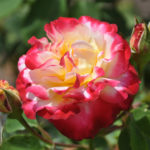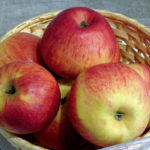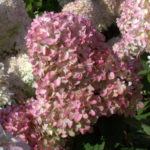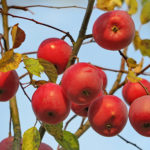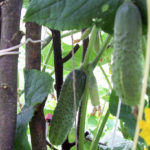Thuja western teddy
Dwarf conifers are pleasing to the eye, wherever they are: in the garden, in the yard, in the front garden, in the flower garden or even in the park, square. Their compact size and symmetrical, neat shape make them a fairly common and popular element of modern landscape design. Make a choice in favor of the western thuja variety with the cute name Teddy (Thuja occidentalis Teddy), and it will definitely not disappoint you.
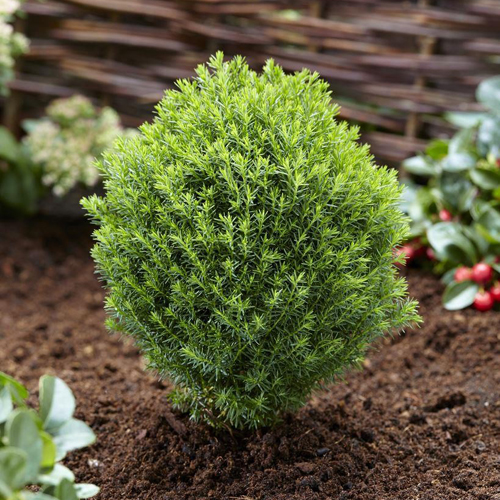
Description of the variety
Teddy is a new variety. Its name is translated from English as "bear cub". The plant largely lives up to its touching name. It is a low-growing cushion shrub with thin, closely spaced shoots. The culture owes its magnificent appearance to a dense crown formed by thick, needle-like, fluffy, soft to the touch needles of dark green, often with a bluish tint, color. In winter, it takes on a brownish or bronze tint. Adult specimens boast the presence of shoots with scaly needles.
The shrub is extremely slow in growth. In a year, its dimensions increase by only a couple of centimeters. Thus, at the age of 10, thuja reaches a height of no more than 0.4 meters. The width of the ephedra is exactly the same. The shape of the shrub is spherical.
This variety is sensitive to soil compaction, as it has superficial, branched roots. But it is shade-tolerant and has good winter hardiness. Ephedra is rarely damaged by insects and fungal diseases, but is vulnerable to sunburn in early spring.

Growing and care
The best place to place Teddy is in an area exposed to ambient light. Thuja tolerates direct rays of the sun, but only in small quantities: for several hours a day. It is undesirable to grow it in the shade if you do not want your pet to lose its decorative appearance: in such conditions, the needles thins, the crown loses its density, and the shoots become thinner and stretch in length.
For good development, shrubs need "correct" soil. This word means increased air and water permeability, sufficient soil fertility and moisture, pH in the range of 5.0-6.5. Avoid planting in low areas where water and cold air stagnate. But a small elevation is ideal for these purposes.
Planting work begins with the preparation of a pit of the required dimensions: depth and width from 60 to 80 cm. A drainage layer about 20 cm thick from expanded clay, gravel and / or broken brick is laid on its bottom. It will not be superfluous to add organic and mineral fertilizer to the hole, especially if the soil used is poor in nutrients. Make sure that the root collar of the thuja is at ground level. At the end of planting, the soil in the zone of the trunk circle is slightly compacted, and the plant itself is watered abundantly. Then the specified area is mulched with peat, tree bark or dried grass. A distance of at least half a meter is maintained between the plants.

Teddy is very hygrophilous, and therefore, in addition to regular intensive watering performed at intervals of 1-3 times a week (depending on weather conditions), sprinkling of the crown of the bush is mandatory from time to time. The combination of these two procedures will help preserve the rich color and pleasant aroma of the needles of the culture. After each watering, mulching of the soil under the plant is shown, but it would be good to do shallow loosening beforehand. These measures will save you the need for frequent weeding.
Every year in the spring, the ephedra is fed with organic fertilizer, a specialized complex for thuja or nitroammophos. Overfeeding of the soil should not be allowed - this is fraught with loss of a spherical shape due to an increase in the growth rate. Also, in the spring, the crop needs sanitary pruning, which prescribes the removal of dry, damaged, too long and weak shoots. For the first time, this event should be held after the culture is 2 years old. No shaping Teddy haircut required.
In unfavorable weather conditions, the plant can become a victim of fungal diseases. These include cytosporosis, fusarium, brown shute, etc. When the first signs of any of these ailments appear, the culture should be treated with Bordeaux liquid or Fundazol. Spring preventive spraying of thuja also does not hurt. If a shrub has been attacked by a thuja aphid, you should resort to treating the ephedra with an insecticide (for example, Decis) - twice, with a break of 1-2 weeks.
It is important to shelter for the winter only young plants aged 1 to 3 years. Burlap, spruce branches or agrofibre are used as insulation. The root zone should be sprinkled with straw, having rid it of mulch first.
Use cases
Teddy is loved by landscape designers because it can be used to create a variety of compositions. A low-growing ephedra will adorn group and mixed plantings, flower beds, mixborders, the area near the gazebo, near the garden bench and sculpture. It is also appropriate on the banks of artificial decorative reservoirs, because it loves humid air. It is a superb feature in rocky, heather and Japanese gardens. The variety is planted on the sides of the paths, often combined with roses, peonies, irises, evergreens with a cone-shaped crown and golden needles. A coniferous shrub looks wonderful on a grassy lawn in splendid isolation, playing in this case the role of an accent element. Tuyu is often planted in containers, which are then used to decorate the terrace, loggias, roofs, balconies, or divide the garden into zones.
